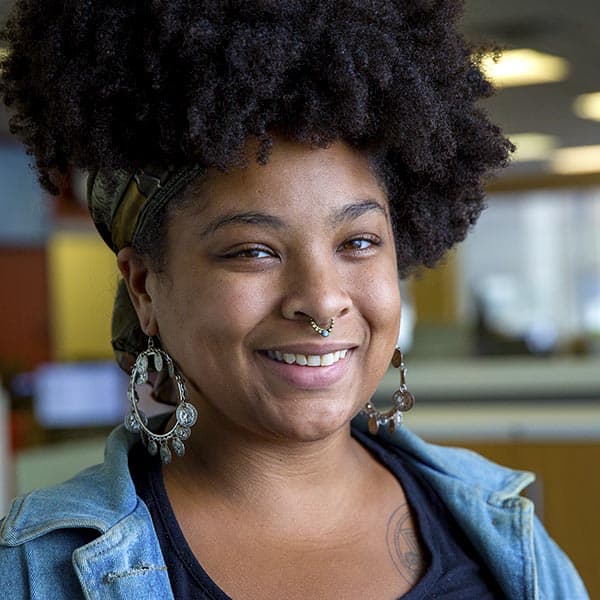Advertisement
Side Eyes And Grimaces: Chanel Thervil's 'Enigma' Explores The Subtlety Of Racism
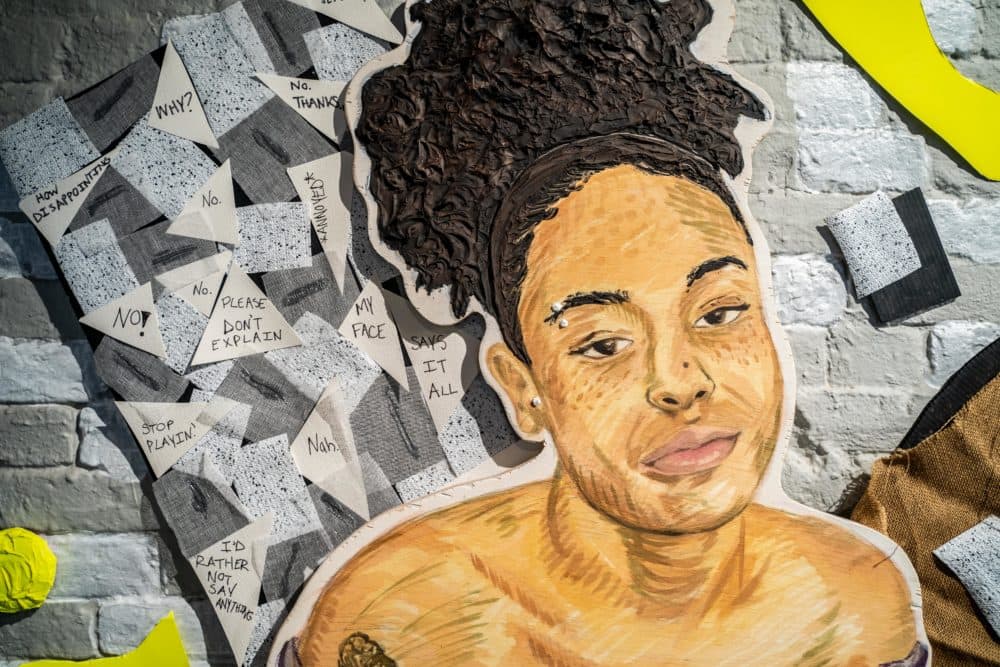
When you first walk into Chanel Thervil’s “Enigma: Reactions to Racism,” there are a few things that may immediately stand out to you.
It may be the larger than life portraits of local artists, rendered in stillness on pieces of wood affixed to the walls. It may be the tornado of fluorescent yellows and burlap browns that drift around the portraits like debris from a storm. It may even be the fabric, stretched across certain portraits to mimic the texture of head wraps and clothing.
But, it was the expression in the portraits that struck me in the gut. Some of them are forcibly smiling, some are caught in a perpetual grimace and some are giving a stoic side eye to an ominous, invisible presence. But all of their expressions epitomize the different stages of the awkward and uncomfortable feelings that black and brown people experience while in the presence of racism.
Thervil’s “Enigma” is her newest multimedia exhibit, on view until May 3 as a part of her residency with The Urbano Project. The expressions on the faces of her subjects were painted with purposeful intention.
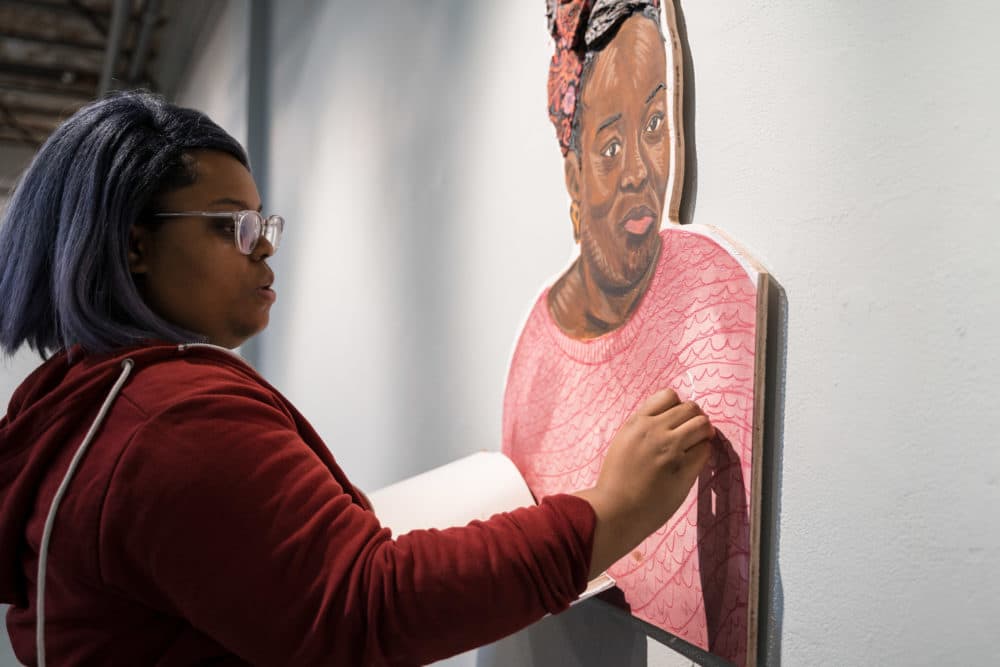
“I know for a fact that I'm seducing people with what seems like a really beautiful affirming uplifting image,” Thervil said. From afar, the portraits look like positive representations of people of color but once you step closer, it’s clear that each of the people in the portraits are frozen in that moment between experiencing racism and deciding how to react to it.
“I want people to start to pay attention to the subtlety in the expression, the emotion and the silence where things aren't being said,” Thervil elaborated. “I'm not interested in creating another easily identifiable version of black pain.”
“Enigma” pushes back against the perception that racism and how people of color react to it must always be loud, cacophonous or filled with pain and rage.
When Thervil moved from New York City to Boston in 2013, she noticed a stark shift in the expression of racist attitudes. In New York, she was used to emboldened, unapologetic expressions of racism.
Advertisement
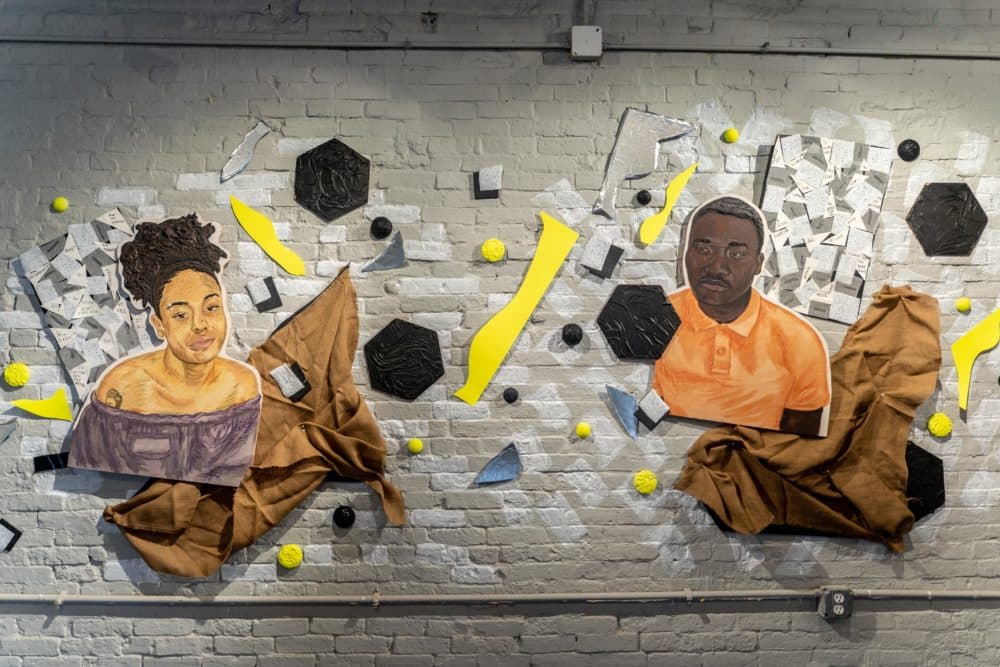
But her experiences with racism in Boston were much more quiet, hidden underneath a facade of white liberalism. Thervil recalled a specific instance while being interviewed for a leadership position at a nonprofit.
"The executive director asked me how I was going to convince other black people to apply for their open teaching positions so that they could diversify their work force," she said. "When I challenged her question, she tried to make up for it by telling me they had a quota of black teachers to fill."
This encounter with tokenism is one Thervil has encountered or heard of frequently. “Because Boston is such a liberal city, there are a lot of people who don’t think they’re racist when they are,” Thervil said. “Just because you have good intentions doesn’t mean that the impact of your actions isn’t negative, racist or discriminatory."
She found, through her conversations with other black millennials in Boston, that they shared similar experiences with this more subtle form of racism. The "enigma" of this racism and its harmful impacts pushed her to explore it further through her art.
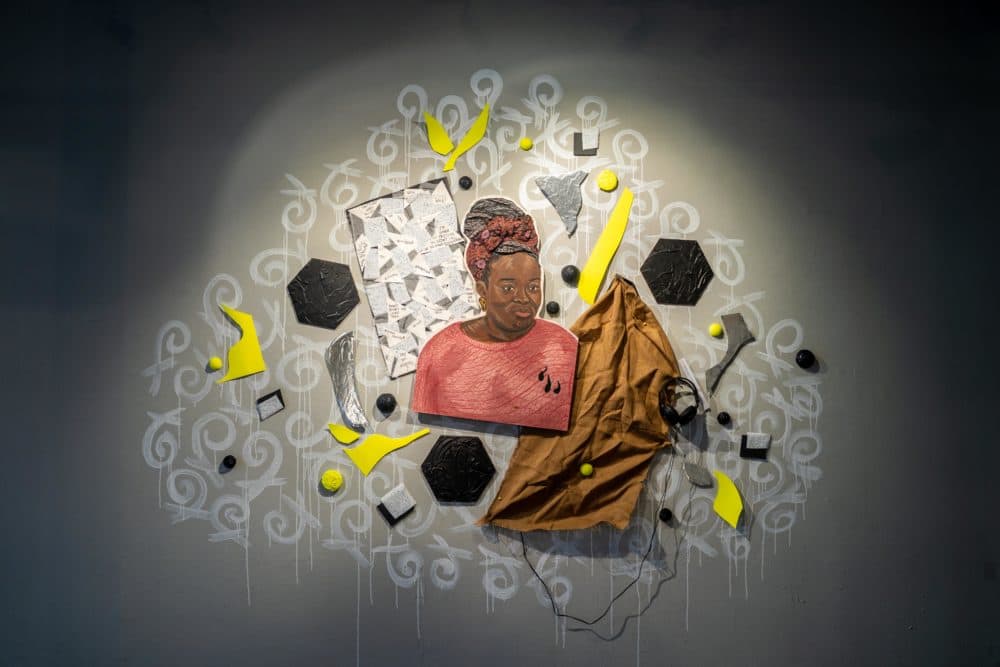
Each portrait features artists and organizers in Boston whom Thervil knows or has worked with professionally. For all of her portraits, both now and in the past, she interviews subjects, capturing their story through recordings. “Enigma” is her first foray into utilizing and incorporating audio into an exhibit.
Thervil asked each of her subjects three questions about their experiences with racism and recorded their responses. In the exhibit, prompts urge visitors to touch a certain part of the portrait, from the black stripes on a shirt to bronze strips on a sitter's shoulders.
The power of "Enigma" also derives from the tactility and rich texture of the paintings — an invitation to physically interact with the pieces in a way that makes the stories behind them undeniable.
“Essentially the human touch is the on switch for activating that voice of the person so they can tell you their story,” Thervil explained. “It shows that you really need to be present and confronted with that person to allow yourself to absorb the other person’s thoughts, emotions and experiences.”
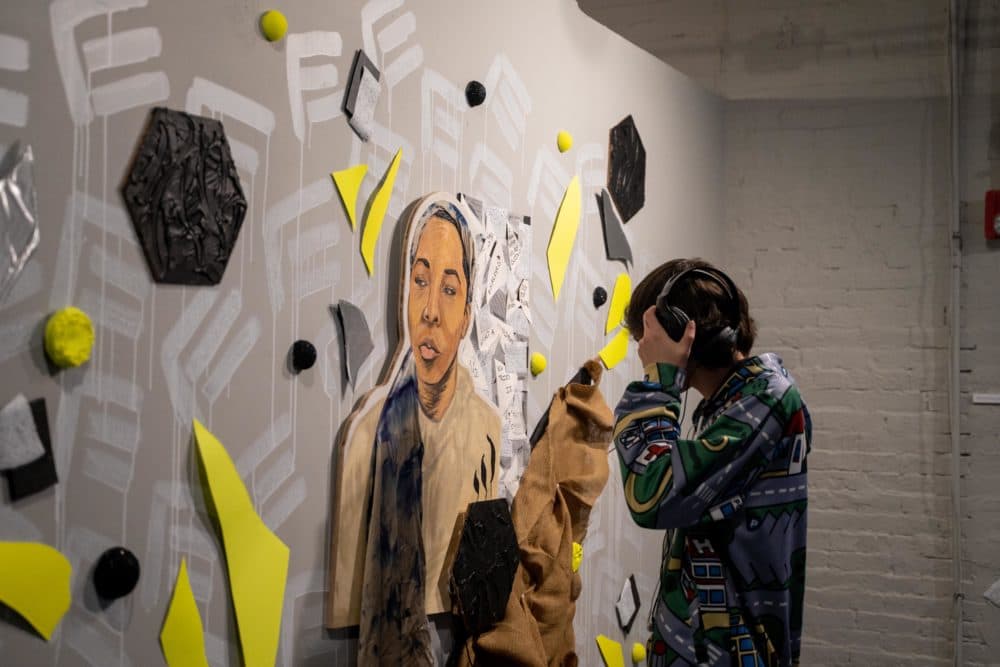
Apart from the audio, Thervil included visual cues and indicators that signal visitors to get up close and personal with the art. She chose fluorescent yellow, rendered in abstract shapes, to frame the portraits because of its literal association with “highlighting important information” in schools and colleges.
Combining that startling, man-made color with more natural browns mimics the organic and manufactured nature of racism in American culture. These colors are strategically placed around the portraits. “Each portrait is a person stuck in all of these layers of things that are happening around them, above them and beside them,” said Thervil. “They’re frozen in a whirlwind.”
As part of her residency with The Urbano Project, Thervil is teaching a youth centered art class called “The Promise of Tomorrow.” Most of the students, between the ages of 14 and 18, are of color and interested in pursuing work in the arts. “It’s important that they know the viability of art,” Thervil said. “That they know that making a career from art is possible for them.” Perhaps having art as a vehicle for expression will help them process their experiences with racism, as it has for her, she says.
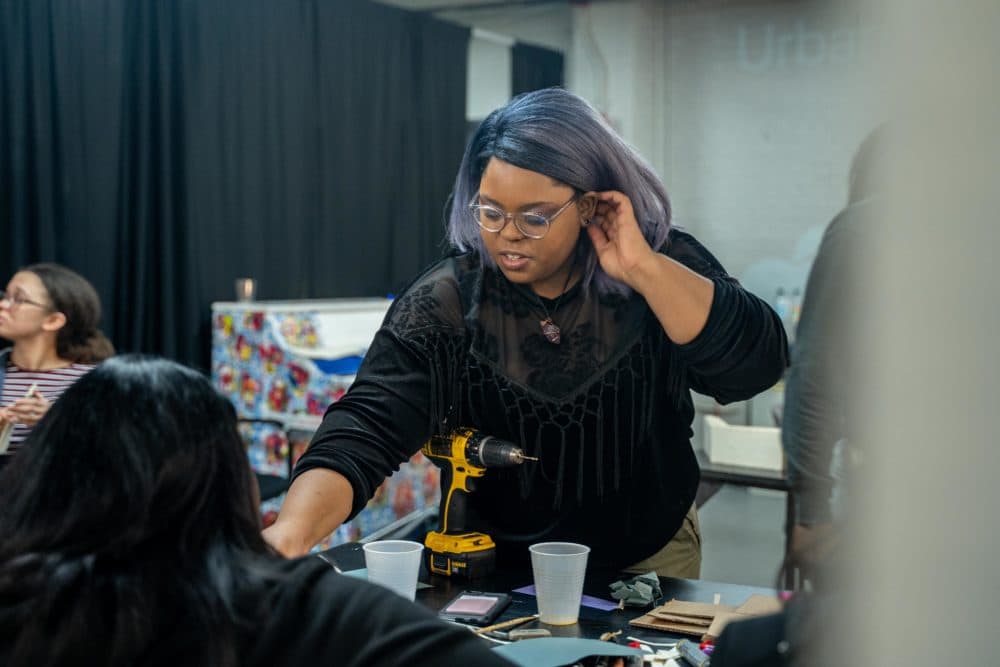
A large dotted square with the words “Prime #Selfie Location” splashed across the top is one of the last things seen when leaving the exhibit. It serves an an invitation to bodily interact with the art, to make it a piece of one's physical reality or leave the space with a memory.
It was for this reason, when asked if she would share a portion of the audio for this article, that she refused with a knowing smile. “The experience lies in being in this space,” she said. “It lies in standing in front of the art, listening to these stories and being present, in both mind and body.”
